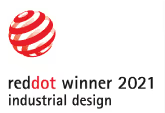Maximizing customer research
You always give thoroughly analyzed, honest feedback when someone wants your opinion, right? And always enthusiastically follow-through when someone asks you for a favor?
Can’t say that I do. So why do we think potential customers won’t carelessly speed through a 30 minute survey? Or won’t over-optimistically dismiss the little painpoints of a product that is being presented to them? When designing research studies, it is a major challenge to eliminate bias from the feedback that we count on to direct our investment of time and money. This is why conducting qualitative research with a facilitator that can look beyond the face value of participant responses is so important.
“Because of close researcher involvement, the researcher gains an insider's view of the field. This allows the researcher to find issues that are often missed (such as subtleties and complexities) by the scientific, more positivistic inquiries...Qualitative analysis allows for ambiguities/contradictions in the data, which are a reflection of social reality” (McLeod, S. A. (2017).
Is there a way for us to anticipate and proactively design research studies for these contradictions of social reality? Bestselling author Gretchen Rubin’s latest book The Four Tendencies has really struck me as a useful lens for this mission personally and professionally. This is not an all-inclusive personality type like Ty Hagler discussed in Myers-Briggs and Other Pseudoscience. Rubin argues that she has uncovered a definitive framework specific to understanding a person’s tendency when responding to expectations. She makes an important distinction that expectations differ from motivation and desires, because desires do not necessarily compel action. It’s a nuanced aspect of a person’s thought and behavior pattern, but an important one. Can you think of a time that you really wanted to do something but just couldn’t? Or you found yourself easily doing something that you actually didn’t care that much about?
The truth is, an ideal experience brought to life may not be the deciding factor for someone to buy your product.
As a self-proclaimed Obliger, it's been eye-opening for me to reflect back on what habits I have followed through on (the book points out that Obligers tend to have the most to gain from learning about their Tendency). In college, I switched from studying Art to Industrial Design so that I could apply my creativity to solving other people’s problems. I stay in shape by attending scheduled group fitness classes and playing on a rec league where my teammates count on me. My curiosity about how things work and why people do the things they do is propelled by a role that rewards just that. Now when I consider the likelihood of conquering other future goals, it helps to know that “by doing things for others, I can do things for myself.”
Satisfied with testing out Rubin’s principles on myself, I’ve turned my focus to crafting circumstances that will maximize the positive aspects of our research participants’ Tendencies. These potential customers have busy lives, but they also expect more from the products and services that are pushed at them. I think its only fair that we, as researchers, provide an environment that works best for each individual, so they can effectively lend their voice to a new product or service that is relevant to them.
Here’s a brief look at the Four Tendencies and some considerations for designing a successful qualitative study experience.

UPHOLDERS want to know what should be done, they value self-command and performance
Why are Upholders an asset to qualitative research?
- They’re self-starters, that have a deep capacity to make themselves do things even if they don't feel like it
- Able to follow-through a long process and recognize their own limits
How we can we shape our study with Upholders in mind?
- Make rules clear and do not abruptly change schedules or expectations along the way
- Exercises where they’re expected to stretch the rules may make them uneasy
- Avoid exaggerating expectations to gain adherence
By not appealing to Upholder tendencies:
- They may refuse to tackle an opportunity if they're afraid they won’t be able to fulfill it
QUESTIONERS want justification, they value purpose
Why are Questioners an asset to qualitative research?
- They don't unthinkingly accept expectations that are not well-justified. Willing to play devil’s advocate.
- Prefer to make well-considered decisions and are often willing to do exhaustive research
How can we shape our study with Questioners in mind?
- Provide clarity and opportunities to answer questions, if they understand its purpose they’ll have an easier time implementing it
- Help them customize the study so that it works for their own reasons
- Use deadlines to counteract analysis paralysis
By not appealing to the Questioner tendencies:
- Desire for more information may block them from moving forward
- If they disagree with an outer expectation, they feel entitled to dismiss it
OBLIGERS need accountability, they value teamwork and duty
Why are Obligers an asset to qualitative research?
- They are the largest percentage of the population, and the most likely to contribute
- Excel at meeting other people’s demands and deadlines
How we can we shape our study with Obligers in mind?
- Help them meet an aim by thinking of its benefit to other people instead of personal value
- Face-to-face interactions work best, with impersonal forms of accountability including praise, cheers, and encouragement
- Be aware that they often misinterpret their reasons for behavior, whether they’re meeting or failing expectations
By not appealing to Obliger tendencies:
- Expectations attach so easily that they may feel obliged to do things that no one is actually expecting from them
- They may not protest against a troublesome situation, then are likely to feel resentful which may trigger obliger rebellion
REBELS want freedom to do something their own way, they value self-identity
Why are Rebels an asset to qualitative research?
- They enjoy meeting challenges, and will drive themselves hard if they are doing what they want
- Place a high value on authenticity and self-determination
- Empower others to step outside their comfort zone and established rules
How we can we shape our study with Rebels in mind?
- They can meet an expectation when it allows them to express their identity or feels like their idea
- Give them the information they need to make an informed decision, alert them to the consequences, then allow them to choose and act without an audience
By not appealing to Rebel tendencies:
- Resist anything that they perceive to be an attempt at control or someone else deciding what they can do
- Approval or encouragement may ignite resistance to their own desires
The Bottom Line...
Carefully designed questions in a quantitative survey can measure user preferences, but I believe they should be built on customized qualitative exercises to extract the deeper expectations at play. We need to understand both the stated What and the implicit Why in order to craft a compelling experience for the individual. By training ourselves to empathize with all Four Tendencies, we can increase participation and gain meaningful insights that breaks through the unrealized ideal experience with persuasive triggers for action.
So for you Upholders - Get this checked off your list and sign up for a call with us.
For you Questioners - Let's discuss a customized approach that works for your project's goals.
For you Obligers - Be the role model for your company by setting up some face time with our team.
For you Rebels - If you want to challenge the status quo, we're here to help you make it happen.



